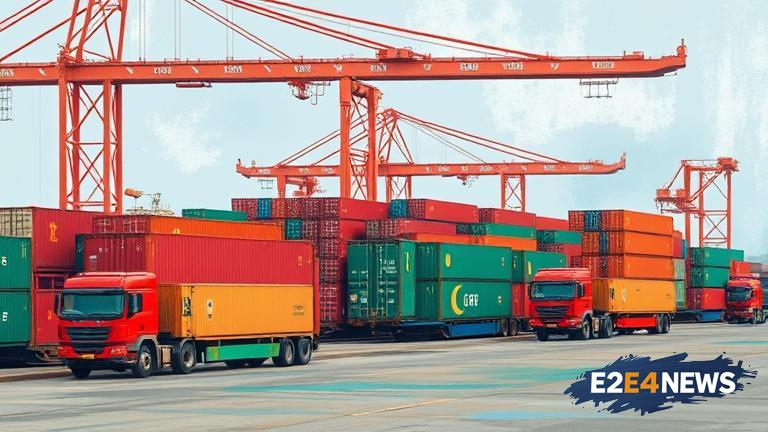Pakistan’s trade with Central Asia has experienced a notable decline in recent times, primarily due to the country’s rising imports. This shift has significant implications for Pakistan’s economy and its relationships with neighboring countries. The trade deficit between Pakistan and Central Asia has been widening, with Pakistan’s imports from the region exceeding its exports. This imbalance has led to a decrease in trade volumes, affecting the economic growth of both Pakistan and Central Asia. The main reason behind this decline is the increasing demand for imported goods in Pakistan, which has resulted in a surge in imports from Central Asia. However, Pakistan’s exports to the region have not been able to keep pace with the rising imports, leading to a trade deficit. The country’s trade with Central Asia is mainly comprised of textiles, leather goods, and food products, but the demand for these products has been declining in recent years. Furthermore, the lack of infrastructure and transportation links between Pakistan and Central Asia has hindered trade growth. The Karakoram Highway, which connects Pakistan to China and Central Asia, is in need of upgrading and expansion to facilitate smoother trade. Additionally, the absence of a free trade agreement between Pakistan and Central Asia has created barriers to trade, making it difficult for businesses to operate in the region. The Pakistani government has been trying to boost trade with Central Asia through various initiatives, including the establishment of trade councils and the organization of trade fairs. However, more needs to be done to address the underlying issues affecting trade growth. The private sector also has a crucial role to play in promoting trade between Pakistan and Central Asia. Businesses need to be encouraged to invest in the region and take advantage of the existing trade opportunities. Moreover, the government should focus on improving the business environment and reducing bureaucratic hurdles to facilitate trade. The potential for trade growth between Pakistan and Central Asia is significant, with the region offering a large market for Pakistani products. However, this potential can only be realized if the necessary steps are taken to address the existing challenges. In conclusion, the decline in trade between Pakistan and Central Asia is a cause for concern, and immediate action is needed to reverse this trend. The government and private sector must work together to promote trade growth and strengthen economic ties between Pakistan and Central Asia. This can be achieved through a combination of policy reforms, infrastructure development, and private sector investment. By doing so, Pakistan can tap into the vast market of Central Asia and promote economic growth and development. The future of trade between Pakistan and Central Asia looks promising, but it requires a concerted effort from all stakeholders to realize its potential. The benefits of increased trade between Pakistan and Central Asia are numerous, ranging from economic growth to job creation and poverty reduction. Therefore, it is essential to prioritize trade growth and work towards creating a more favorable business environment. The time to act is now, and the government and private sector must join hands to promote trade between Pakistan and Central Asia.
